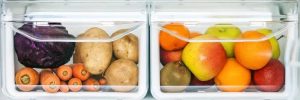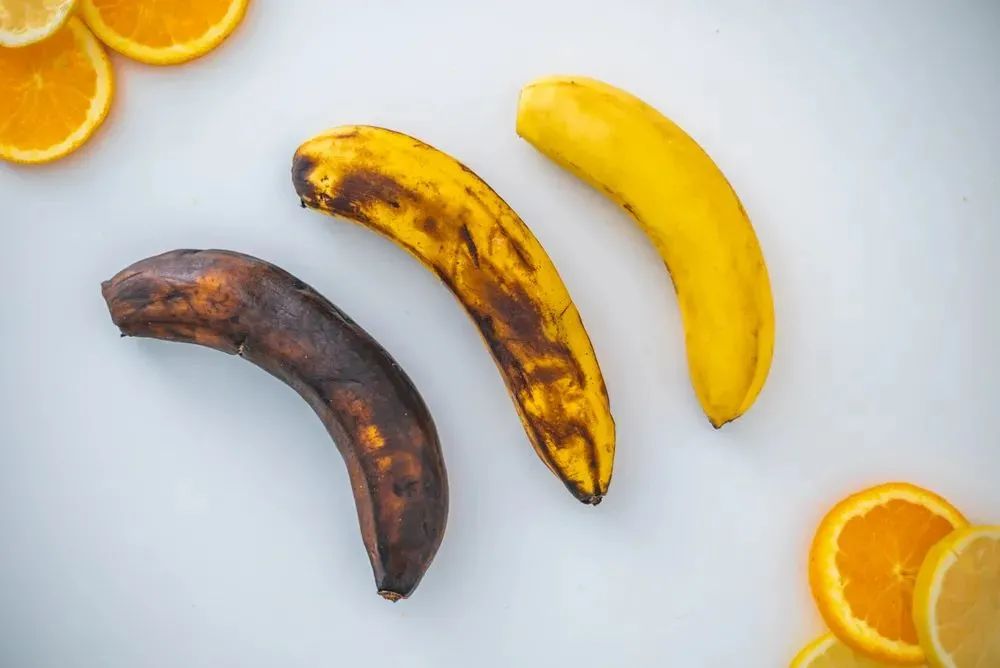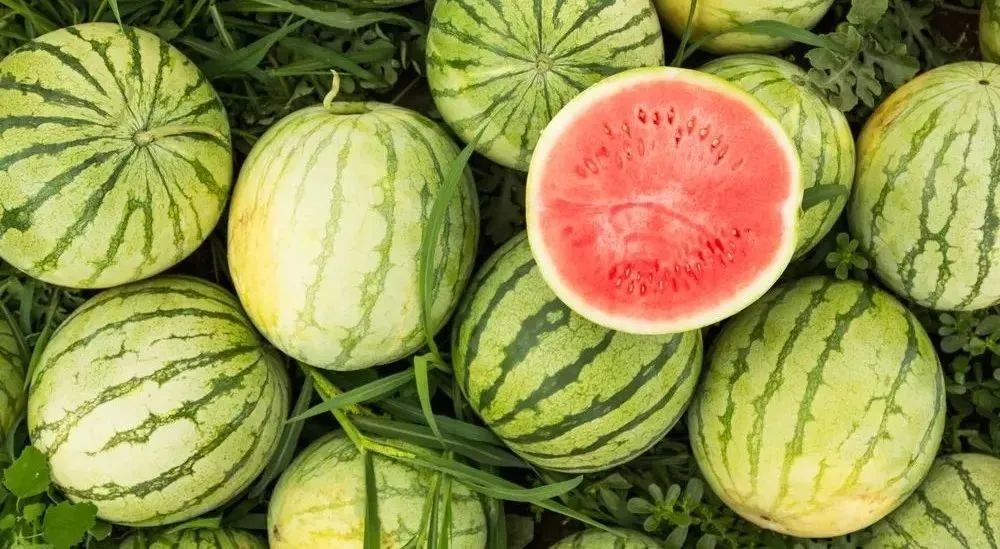
In summer, things are especially prone to breakage.
The food is rotten overnight when left out.
The fruit rots in one day in the restaurant.
So many people regard the refrigerator as an all-purpose fresh-keeping box, as if it will not be broken as long as it is put in it.
But doing so will not only take up space in the refrigerator and waste electricity, but it may also accelerate the deterioration of certain foods. We have sorted out 9 common misunderstandings to help you avoid lightning.
Misunderstanding: put tropical fruits in the refrigerator if they are not ripe
Summer is the season of fruits, especially tropical fruits, but the refrigerator may really be broken if it is completely stuffed.
Common bananas, durians, papaya, mangoes, and avocados are usually picked and sold when they are not fully ripe.
If you put it directly in the refrigerator, it will inhibit the release of its own ethylene (a component that helps the fruit to ripen). It may always be raw in the refrigerator, and there is no way to soften and sweeten it. So don’t put raw tropical fruits in the refrigerator.
In addition, these tropical fruits are more sensitive to low temperatures and are prone to frostbite (blackening) when stored in cold storage. In mild cases, the epidermis turns brown and pits, and in severe cases, it may even become soft inside.
The best way is to keep it at room temperature and finish it as soon as possible. If you really want to eat iced, just put it in the refrigerator a few hours in advance.

It’s either frozen or unfamiliar…
Misunderstanding: It’s hot, put coffee and tea in the refrigerator
Tea and coffee are essentially dried foods. After they are dried, their moisture content is extremely low, and microorganisms cannot reproduce. As long as they pay attention to moisture, they can be stored for a long time.
Do not put the tea and coffee in the refrigerator that have been opened because they are not tightly sealed and will easily become damp and moldy, and the taste in the refrigerator will also be mixed into the coffee and tea, which will affect the flavor.
But if the tea has not been opened, you can consider putting it in the refrigerator for longer storage, and the flavor retention will be better.
Misunderstanding: Chocolate keeps longer in the refrigerator
In fact, putting in the refrigerator will affect the quality of chocolate.
The melting point of chocolate is more than 20 degrees, and the temperature in the refrigerator is low, which easily changes the crystal form of the fat crystal. Although it will not deteriorate, the taste will gradually become rough, and the surface will be long and creamy, and no longer delicate and uniform.
Chocolate is suitable to be placed at room temperature of ten to twenty degrees Celsius. Consider putting chocolate in a cool room in summer.
Misunderstanding: Put fruits and vegetables together
Many people know that meat and vegetables should be separated, but they never thought that vegetables and fruits should also be separated.
We mentioned earlier that some common fruits, such as apples, mangoes, etc., will continue to produce ethylene (a component released by the fruit itself that helps it mature) after being harvested.
Although low temperature can inhibit the secretion of ethylene, when put together with other vegetables, ethylene will still make other vegetables and fruits spoil faster, which is not conducive to preservation.
These fruits that easily release ethylene also include bananas, avocados, and peaches. It is recommended that the fruits bought home be sealed and stored separately from vegetables.

Do not put fruits and vegetables together.
Misunderstanding: Wash the eggs before putting them in the refrigerator
Many people will find that there is egg feces in the purchase, and feel that it is not clean to put it directly in the refrigerator, so they will wash it and put it in the refrigerator.
In fact, this is not necessary. There is a layer of gelatinous film on the surface of the egg, which can prevent outside bacteria from entering the inside of the egg and play a role in protecting the egg.
Cleaning the eggs will destroy the surface film, which will make it easier for the bacteria outside to enter the inside of the bacteria.
In addition, there may be salmonella on the surface of the egg (a common germ that easily causes diarrhea), and the cleaning process may also contaminate the stove.
After the eggs are bought home, put them in the refrigerator in time, seal them with a fresh-keeping bag or fresh-keeping box, and put them in a separate layer.
If you really feel uncomfortable looking at the chicken poop on the eggshell, you can buy a “clean egg” that has been processed.

Don’t wash it, it will break!
Misunderstanding: Put the meat you buy home directly in the refrigerator
Animal foods such as meat and seafood are often more likely to carry pathogenic bacteria. Putting them in the refrigerator without sealing treatment may cause cross-spread of bacteria and contaminate other foods such as vegetables, fruits, steamed bread, noodles, etc. in the refrigerator.
Especially beware of Listeria, which is not afraid of cold.
Listeria is different from our common bacteria that make food spoilage. It can live for a long time under low temperature conditions. After infection, people will develop symptoms such as fever, muscle pain, nausea, and diarrhea. In severe cases, they may even develop into meningitis and sepsis, which are endangered. life.
If the meat you bought is in plastic packaging, don’t open it and put it in the refrigerator; but if you buy meat in bulk, it must be sealed before putting it in the refrigerator.
Misunderstanding: Put the cut fruit directly in the refrigerator
When many people eat fruit, they can’t finish it at one time after cutting it, so they put it in the refrigerator. The most common representative is watermelon.
However, the refrigerator is not a sterile environment. It is often mixed with harmful bacteria. The cut fruit has a lot of water and sugar, which is very suitable for the growth of bacteria, which accelerates the spoilage of the fruit.
Covering the cut fruit with plastic wrap is an effective way to block bacteria in the refrigerator. But it is also related to your hands, the fruit-cutting knife and cutting board, the cleanliness of the plastic wrap, and the bacteria contained in the watermelon noodles.
If you can’t finish eating and want to keep it longer, in addition to putting it in the refrigerator in time, you should also try to follow these points when cutting melons:
Keep clean (please wash your hands to ensure that the knife and plastic wrap are clean)
Separate raw and cooked meat (knife and cutting board for cutting melon should be separated from meat cutting)
Clean it well (wash the surface with water before cutting the watermelon)

Buy as much as you eat, fresh is the best!
Misunderstanding: opened milk waits until you remember to put it in the refrigerator
When many parents give their children milk, the children are too playful or because of the small stomach capacity, they throw it aside before drinking it at a time. I remembered it before putting it in the refrigerator, but in fact the milk might have been spoiled by this time.
The US Centers for Disease Control and Prevention recommends that in the case of high temperature in summer (temperature exceeding 32.2 degrees), foods that are prone to spoilage (milk, vegetables, fruits, eggs, meat, etc.) should not be placed outdoors for more than 1 hour.
If it exceeds the time, it is best to throw it away and do not continue to eat it (in non-hot weather, it is recommended not to exceed 2 hours).
If the spoiled milk is put into the refrigerator again, the refrigerator will not prevent it from continuing to deteriorate. For milk that has been opened, remember to put it in the refrigerator in time.
Misunderstanding: The food waits to be cooled before entering the refrigerator
Many people are used to waiting for the food to cool before putting it in the refrigerator. In addition, putting things in the refrigerator that are too hot will damage the refrigerator.
But the cooling process will provide a great opportunity for bacteria, because bacteria will multiply rapidly in the “dangerous zone” at 4℃~60℃.
In summer, the temperature is high. When you put it in a cool place (room temperature), the quantity can double in less than half an hour. It may be that the food has a lot of bacteria hidden before it is put in the refrigerator.
For your own health, the food should be put in the refrigerator while it is hot and sealed.
The refrigerator is indeed a good thing. It keeps the ingredients fresh for longer, but it must be used correctly, otherwise your refrigerator can become a petri dish for bacteria. Eating bad stomachs is a matter of minutes.
Of course, the best way to preserve is to eat as much as you buy, and put it all in your stomach!

Eat me quickly!
Checklist: Tips for Keeping Food in the Refrigerator
The truth
Preservation of freshly bought food:
1. Bananas, durians, papaya, mangoes, avocados and other tropical fruits can be stored at room temperature.
2. Apples, mangos, bananas, avocados, peaches, etc. (fruits that easily release ethylene) should not be put together with vegetables, sealed and stored separately.
3. The meat is individually packaged and then placed in the refrigerator to avoid bacterial cross-contamination.
4. Put the eggs in the refrigerator as soon as possible and do not need to wash them.
Save half-eaten food:
1. Cut the unfinished fruits, wrap them with plastic wrap, seal them, and store them in the refrigerator. Cut off a layer of the surface before eating.
2. Opened milk should be put in the refrigerator within 1 hour on high temperature days (2 hours on non-high temperature days), and discarded after the time has passed.
3. Meals that are not to be eaten for a short time should be kept in the refrigerator while they are hot.
Foods that do not need to be placed in the refrigerator are always available at home:
1. Opened coffee, milk powder, tea and other dry foods are stored in a cool place in a sealed container.
2. Preserved and candied foods such as candies, preserved fruits, yellow sauce, bean paste, etc. will not be damaged when stored at room temperature.
3. Try not to put the chocolate in the refrigerator, the taste will deteriorate.
4. Honey is easy to crystallize when placed in the refrigerator, and it looks like it is broken.
Comments